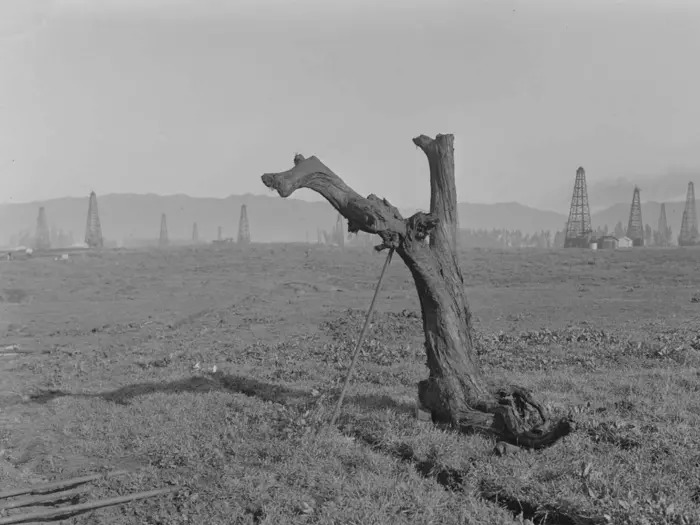Penn State Research Reveals How Ice Age Trees Stabilized Earth's Climate by "Suffocating"
- MM24 News Desk
- 3 hours ago
- 3 min read

Penn State scientists have discovered that ancient trees during the last ice age inadvertently stabilized Earth's atmosphere by breathing less efficiently. Analyzing preserved trees from sites like the La Brea Tar Pits, researchers found that as CO2 levels dropped to around 185-210 parts per million, trees increased photorespiration—releasing CO2 back into the atmosphere nearly as fast as they removed it, creating a natural brake that cclimate cooling.
During the last ice age, when temperatures plummeted and atmospheric carbon dioxide reached dangerously low levels, Earth's trees may have performed an unexpected climate rescue mission by essentially suffocating. New research published today in Nature Geoscience reveals that ancient trees increased their photorespiration rates—a process akin to labored breathing—which released enough carbon dioxide back into the atmosphere to prevent the planet from becoming uninhabitable for plant life.
The study, led by Dr. Max Lloyd, assistant professor of geosciences at Penn State, examined chemical fingerprints in subfossil wood from across North America to understand how plants responded to the harsh conditions of the last glacial period approximately 20,000 years ago. What they discovered challenges our understanding of plant-climate interactions and reveals a sophisticated natural feedback system that maintained environmental stability.
"When we're thinking ahead about what's going to happen as the climate changes, one big question is: If we continue to increase atmospheric CO2, how will the plant world respond?" said Dr. Max Lloyd. "We found a clear link between changes in climate and responses in the biosphere. As atmospheric CO2 levels and temperatures dropped, many plants became less efficient at fixing carbon, which in turn slowed further drawdown of CO2 from the atmosphere. There is a natural feedback loop we're just starting to understand."
The research team employed a novel technique analyzing clumped isotopes in preserved wood, which act as chemical fingerprints for photorespiration rates. Photorespiration occurs when plants take in oxygen and release carbon dioxide, essentially undoing some of the work of photosynthesis. By comparing ice age trees with modern specimens, the researchers found that trees from warmer regions during the glacial period had significantly higher photorespiration rates than their contemporary counterparts.
Some of the most compelling evidence came from analysis of ancient juniper wood preserved in the La Brea Tar Pits in Southern California. These remarkably preserved samples showed clear signs of elevated photorespiration, indicating that the trees were releasing CO2 back into the atmosphere nearly as fast as they could remove it through photosynthesis.
"The relatively understudied plant fossils at La Brea Tar Pits are an excellent resource for understanding the responses of plants to climate change, not just in the past, but in the future," said Regan Dunn, assistant deputy director of the La Brea Tar Pits & Museum and co-author on the paper. "We're only scratching the surface on what these ancient plants can tell us."
The findings provide the first direct evidence supporting a long-standing hypothesis about why atmospheric carbon dioxide levels never fell below the critical threshold of 185 to 210 parts per million during glacial periods. This natural regulatory mechanism acted as a planetary safety valve, ensuring that CO2 levels remained sufficient for plant survival despite the cooling climate.
"To our knowledge, this is the first time that we could test the long-held hypothesis that elevated photorespiration helped keep atmospheric carbon dioxide at these levels tens of thousands of years ago," Dr. Lloyd explained. "Testing this required making measurements of trees that were actually growing at the time."
The research has significant implications for understanding modern climate change and modeling future scenarios. As human activities continue to dramatically alter atmospheric composition, understanding these natural feedback loops becomes increasingly critical for predicting how Earth's biosphere will respond.
"We're trying to understand how plants respond to dramatic changes in their world by looking at a time when the climate was changing relatively quickly," Dr. Lloyd added. The study underscores that plants are not passive participants in climate systems but active regulators that have evolved sophisticated mechanisms to maintain environmental stability over geological timescales.
This discovery also highlights the importance of looking to Earth's past to understand its future. As climate scientists work to refine their models, accounting for these biological feedback mechanisms will be essential for accurate predictions of how our planet will respond to ongoing atmospheric changes.


Comments